Discover 6 hidden attractions, cool sights, and unusual things to do in North Bay (Canada). Don't miss out on these must-see attractions: Pro-Cathedral of the Assumption, Friends of Duchesnay Falls, and CFB North Bay. Also, be sure to include Canadian Forces Museum of Aerospace Defense in your itinerary.
Below, you can find the list of the most amazing places you should visit in North Bay (Ontario).
Table of Contents
Pro-Cathedral of the Assumption
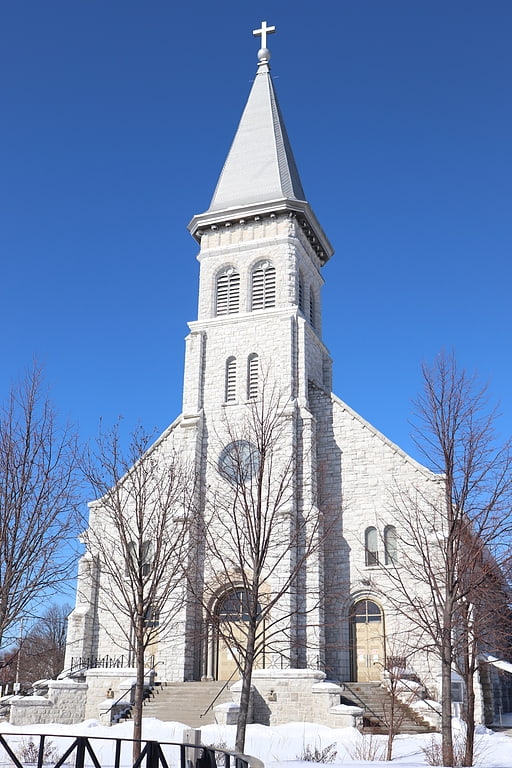
Building in North Bay, Ontario. The Pro-cathedral of the Assumption is a historical catholic church in the city of North Bay, Ontario. The white limestone building, built in 1905, speaks to the history of the city as well as a strong faith community that came together to construct a building of impressive scale and craft for the small city in Northern Ontario. The tall church is a landmark, holding a central role as a gathering place, not only for the city, but also for the entire diocese of Sault Ste. Marie.[1]
Address: 480 McIntyre St W, P1B 2Z4 North Bay
Friends of Duchesnay Falls

Top attraction, Hiking trail, Outdoor activities, Park, View point
Address: East Duchesnay Falls Road, P1B 8G5 North Bay
CFB North Bay
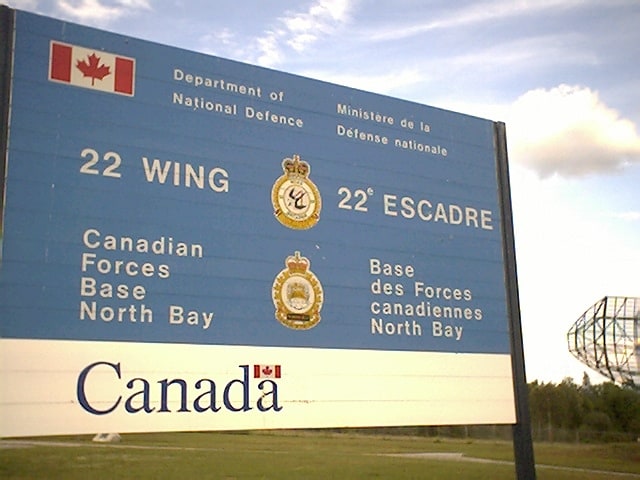
Air base in Ontario. Canadian Forces Base North Bay, also CFB North Bay, is an air force base located at the City of North Bay, Ontario about 350 km north of Toronto. The base is subordinate to 1 Canadian Air Division, Winnipeg, Manitoba, and is the centre for North American Aerospace Defense Command operations in Canada, under the Canadian NORAD Region Headquarters, also in Winnipeg. It is also home to the 1 Air Force, Detachment 2 of the United States Air Force.
22 Wing/Canadian Forces Base North Bay is the most important military base in Canada with respect to the continental air defence of North America and the country's air sovereignty. It is also home to one of the most unusual military installations in North America, the NORAD Underground Complex, a bunker the size of a shopping centre, 60 storeys beneath the surface of the Earth.
On 1 April 1993, all air bases in Canada were redesignated as wings; the base was renamed 22 Wing/Canadian Forces Base North Bay. This is abbreviated as 22 Wing/CFB North Bay. Today, although this designation still stands, the base is often referred to simply as "22 Wing", and the Base Commander as the "Wing Commander".
North Bay's air force base is the centre for the air defence of the entire country, and works in concert with the United States via NORAD for the air defence of Canada-U.S. portion of the North American continent. Activities are wide-ranging, from identifying and monitoring all aircraft entering Canada from overseas, to guarding foreign dignitaries travelling in the country's airspace, to assisting aircraft suffering airborne emergencies, to aiding law enforcement versus smugglers, to participating in NORAD's Christmas Eve Tracking of Santa Claus for children. From the mid-1970s to the mid-1990s it took in Unidentified Flying Object reports from across the country on behalf of the National Research Council of Canada, relaying the reports to a study at the Herzberg Institute of Astrophysics, British Columbia. In 2000, it resumed UFO reporting, provided to researcher Chris Rutkowski at the University of Manitoba.
In 2010, North Bay's operations centre took the first steps towards transitioning from air to aerospace defence, commencing preparations for Sapphire, Canada's first military satellite. Sapphire functions as a contributing sensor in the United States Space Surveillance Network (SSN), performing surveillance of objects orbiting at 6,000 to 40,000 kilometres altitude, and delivering data on those objects (called Resident Space Objects, or RSOs) to the Space Surveillance Operations Centre (SSOC), in North Bay's operations centre. The SSOC, in turn, coordinates with the Joint Space Operations Center, in Vandenberg, California. On 25 February 2013, Sapphire was launched from a site in India, and underwent technical testing and checks, expected to begin its duties in July 2013. Due to various technical delays, the satellite's FOC (Final Operational Certification) wasn't achieved until 30 January 2014. By end of that year it had delivered 1.2 million observations of space objects.
22 Wing/CFB North Bay has two unique properties among air bases in Canada. It is the only Canadian air base that does not have flying units (as of August 1992, when the last flying squadron departed), and the only air base in the country that does not have an airfield (base assets such as control tower, fuel depot and hangars were demolished or sold following the 1992 departure).[2]
Canadian Forces Museum of Aerospace Defense
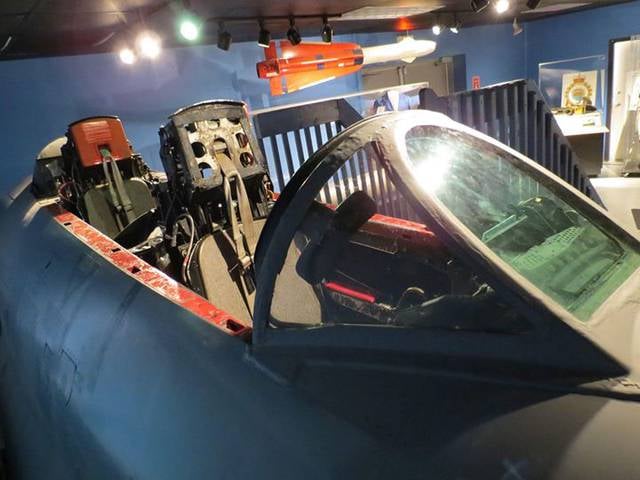
History museum, Military museum, Museum
Address: 33 Manston Crescent, P0H 1P0 North Bay
CF-100 Mk 5M
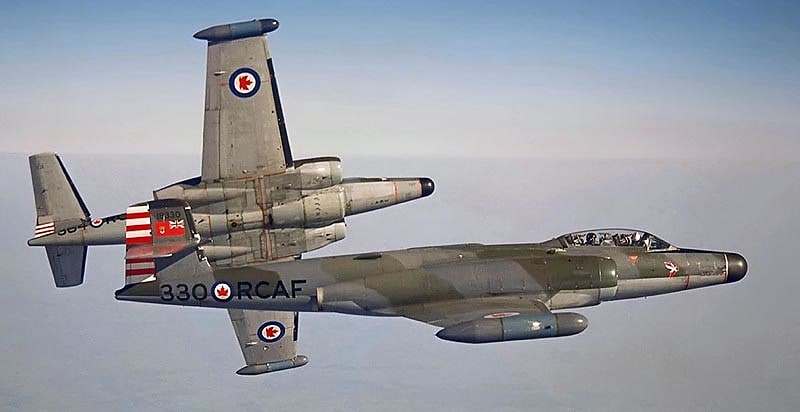
The Avro Canada CF-100 Canuck is a Canadian twinjet interceptor/fighter designed and produced by aircraft manufacturer Avro Canada. It has the distinction of being the only Canadian-designed fighter to enter mass production.
Work commenced during October 1946 in response to a Royal Canadian Air Force (RCAF) specification calling for a new jet-powered interceptor/fighter aircraft suitable for long-distance patrol missions and all-weather operations. On 19 January 1950, the CF-100 Mark 1 prototype, 18101, conducted its maiden flight, powered by a pair of Rolls-Royce Avon RA 3 turbojet engines. Both pre-production and production series aircraft were powered by the domestically-developed Avro Orenda engine instead. Flight testing proved the CF-100 to possess a relatively short takeoff run and a high climb rate, making it well suited to its role as an interceptor. On 18 December 1952, Squadron Leader Janusz Żurakowski, the Avro company chief development test pilot, took the CF-100 Mk 4 prototype up to Mach 1.10 in a dive from 14,000 m (45,000 ft), making the type the first straight-winged jet aircraft to achieve controlled supersonic flight.
The CF-100 principally served with the Royal Canadian Air Force and Canadian Armed Forces; it was also procured in small numbers by Belgium to equip the Belgian Air Component. Introduced during 1952 amid the Cold War, the CF-100 was typically deployed at both NATO bases in Europe and in North America as part of North American Aerospace Defense Command (NORAD). In addition to the type's use by frontline squadrons, it was also supplied to operational training units and frequently used for other secondary duties, including aerial reconnaissance and electronic warfare roles. During the early 1950s, the Avro Canada CF-103, an advanced derivative of the CF-100 that adopted a swept wing and was capable of transonic speeds, was in development, but was terminated. Further development of these concepts ultimately led to the Avro Canada CF-105 Arrow.
During 1981, all of the remaining RCAF CF-100s were withdrawn from service, having been succeeded in the electronic warfare role by the CC-117 Falcon.[3]
North Bay Nugget
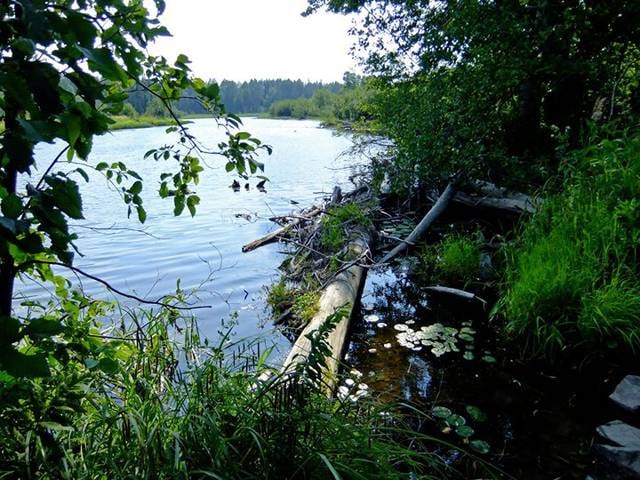
Address: 259 Worthington Street West, North Bay